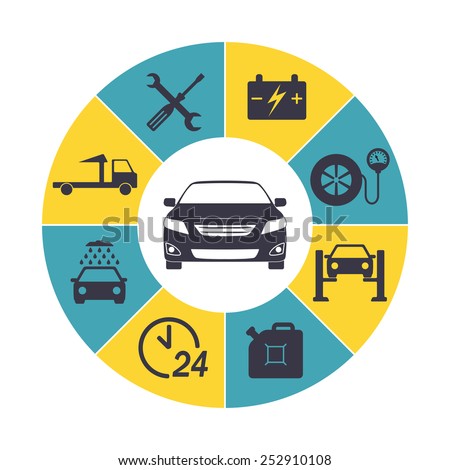Translating Your Vehicle'S Caution Indicators: What They Absolutely Indicate
Translating Your Vehicle'S Caution Indicators: What They Absolutely Indicate
Blog Article
Authored By-Lauritsen Stark
When you're behind the wheel, those glowing caution lights on your dashboard can be a little bit complicated. Do you recognize what they're attempting to inform you regarding your cars and truck's health? Understanding the importance of these lights is essential for your security and the durability of your lorry. So, the next time one of those lights pops up, wouldn't you intend to analyze its message precisely and take the necessary steps to address it?
Common Caution Lights and Interpretations
Determine usual warning lights in your auto and understand their significances to make certain secure driving.
The most typical warning lights consist of the check engine light, which signifies problems with the engine or exhausts system. If this light comes on, it's vital to have your car checked without delay.
The oil pressure warning light shows reduced oil stress, calling for prompt attention to avoid engine damage.
A blinking battery light may recommend a defective charging system, possibly leaving you stranded if not attended to.
The tire stress monitoring system (TPMS) light notifies you to low tire stress, affecting lorry security and fuel efficiency. Overlooking this can lead to hazardous driving problems.
The abdominal light shows a trouble with the anti-lock stopping system, jeopardizing your capability to stop rapidly in emergencies.
Finally, https://airliftperformance17384.theisblog.com/30152090/describing-your-auto-in-under-an-hour-a-simple-overview-for-beginners cautioning light warns of engine overheating, which can cause serious damage otherwise resolved swiftly.
Understanding these common caution lights will assist you address concerns promptly and maintain safe driving problems.
Significance of Prompt Interest
Recognizing the common warning lights in your auto is only the first step; the value of without delay addressing these warnings can't be highlighted sufficient to ensure your security when driving.
When a warning light illuminates on your dashboard, it's your cars and truck's way of communicating a prospective concern that requires interest. Ignoring these cautions can result in a lot more extreme issues in the future, jeopardizing your safety and security and potentially costing you more in repairs.
Motivate interest to advising lights can avoid failures and accidents. For example, a blinking check engine light can suggest a misfire that, if left neglected, could create damage to the catalytic converter. Resolving this promptly can save you from a costly repair service.
In a similar way, a brake system cautioning light may indicate low brake liquid or worn brake pads, essential components for your safety and security when driving.
DIY Troubleshooting Tips
If you discover a caution light on your dashboard, there are a few DIY troubleshooting ideas you can try before seeking specialist assistance.
The initial step is to consult your vehicle's manual to recognize what the details warning light indicates. Occasionally the concern can be as simple as a loosened gas cap triggering the check engine light. Tightening up the gas cap might resolve the problem.
One more common problem is a reduced battery, which can activate different advising lights. Examining the battery links for corrosion and guaranteeing they're safe might deal with the problem.
If a warning light continues, you can attempt resetting it by disconnecting the auto's battery for a couple of minutes and afterwards reconnecting it. Furthermore, inspecting your vehicle's liquid levels, such as oil, coolant, and brake fluid, can help repair alerting lights associated with these systems.
Conclusion
To conclude, understanding your vehicle's caution lights is necessary for keeping your vehicle running smoothly and securely. By promptly resolving Suggested Internet site and recognizing what they mean, you can avoid costly repair work and possible breakdowns.
Keep in mind to consult your vehicle's guidebook for particular information on each cautioning light and act accordingly to guarantee a trouble-free driving experience.
Keep notified, remain safe when driving!
